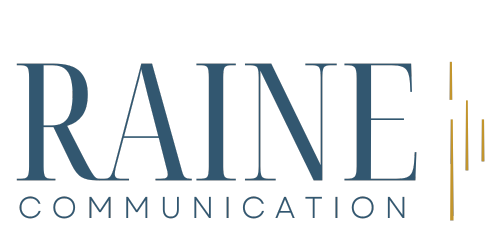Why you need a strategic communication plan
Have you ever started making a recipe that you thought you knew, only to realize that somewhere along the way you must have missed a step? You spent the time doing the work of preparing something that should have been delicious, but you didn’t end up where you hoped. It fell a little flat.
Creating communications and sharing content without a plan is a lot like that. You can do it, but you won’t necessarily end up where you want to go.
Planning might not be as fun as actually creating your content and communications, but it should always come first. And it’s well worth the time and energy you’ll spend doing the hard work of mapping out your content and communication.
A good strategic communication plan can mean that you spend less time creating content but get more out of what you do create and share.
Strategic communication and planning
If you’ve thought about getting your communication ducks in a row and began searching for how to plan your content (or how to plan your communications, or how to plan your marketing), you may have gotten lost in all the terminology – and worse, in all the various definitions of the terminology.
Quite frankly, there are a lot of terms around communication and marketing planning.
One reason why there are so many terms around communication and marketing is because the way we communicate has drastically changed. Plus, organizations and their communication needs are all different.
Another reason is because planning how you’ll communicate with audiences is so important, and there’s no one right way to do it.
The definition of strategic communication is the “purposeful use of communication by an organization to fulfill its mission” (Hallahan et al., 2007). Marketing communication, for example, is a form of strategic communication.
There are a lot of ways organizations communicate strategically. How you segment and define roles is dependent on your organization. Most small businesses and nonprofits don’t have large teams (or sometimes, any team at all) working on sharing their messages, so one individual might “do” many types of communication. They may market their programs, engage the media to generate positive press, and share updates with supporters on social media – all in one day. In the end, it’s all sharing messages with stakeholders to achieve a goal.
Why write a strategic communication plan
Here’s why you should have a strategic communication plan for your small business or nonprofit:
You will know what it is you need to do, when, and why.
You can see how your channels and content can all work together, and how you can use the same content across many channels.
You can see how using similar messaging across channels can amplify your work and reach people where they are.
You can easily see how to maximize one piece of content to stretch your budget and your time.
You will know how you’re going to communicate next week and next month, and when you need to prepare content that helps you connect with your audiences.
You will stop wasting time and money creating communications that don’t work towards your goals, and you won’t stress (as much!) about what needs to be done on Facebook next week.
You more easily manage your workload and make sure things are getting done.
It’s hard to hold yourself (or others) accountable to actually do the things you want to do if it isn’t written down. It’s easy to forget when your plan lives inside your head.
If there are multiple people working on your communications, then a written plan is even more important. A written plan can ensure everyone is on the same page, and the responsible party knows their role in achieving the organization’s goals (which also makes for a happier team, by the way).
Let’s connect on Instagram:
Get started writing your strategic communication plan
If you are ready to start crafting your strategic communication plan to guide your marketing and communication program, read this step-by-step guide to creating your communication plan. You’ll learn how to write your plan in three parts:
Communication Strategy
Communication Plan
Content Management Plan
In doing this work, you’ll begin to see how you can get more mileage out of your creative content and how your individual communications all map to your communication and business goals.
Comments or questions? Please DM me on social media.
For more of my communications and content, subscribe to my biweekly emails and follow me on social media.
Photo at top by Stacy Raine









